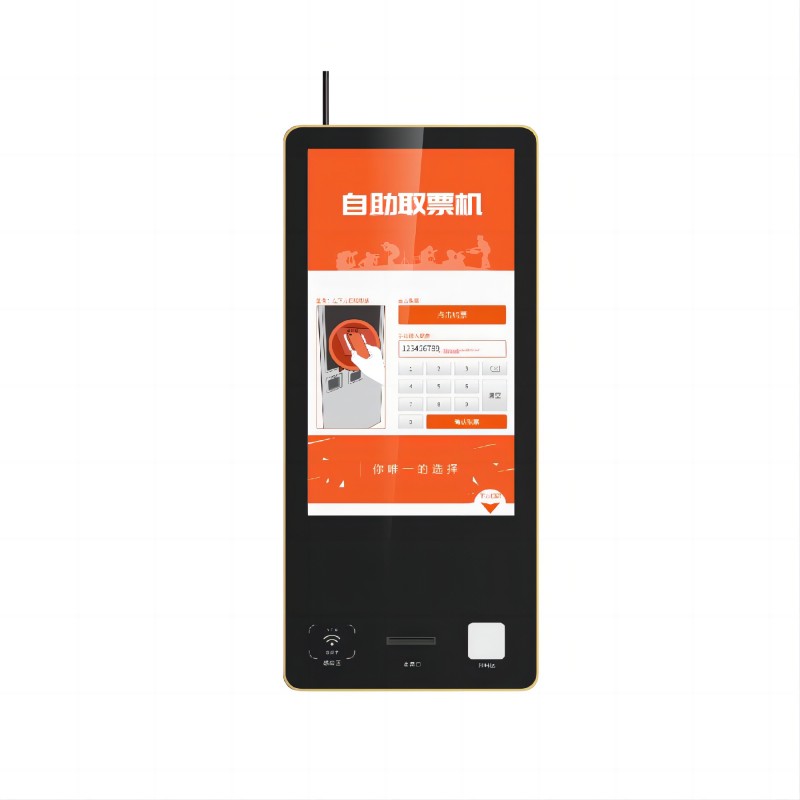
Kiosk hardware components can vary depending on the specific application and functionality of the kiosk. Here are the essential hardware components commonly found in various types of kiosks:
1. **Display**:
- **Screen**: LCD, LED, or OLED screens are used to display content and interact with users.
- **Touchscreen**: Capacitive or resistive touchscreens enable users to interact directly with the kiosk interface.
2. **Computer System**:
- **Processor (CPU)**: Central processing unit for executing applications and processing data.
- **Memory (RAM)**: Temporary storage for running applications and storing data in use.
- **Storage (SSD/HDD)**: Solid-state drives (SSD) or hard disk drives (HDD) for storing operating system, applications, and data.
- **Graphics Processor (GPU)**: Handles graphical tasks, useful for multimedia-rich content or applications.
3. **Enclosure**:
- **Cabinet**: Housing that encloses and protects internal components from environmental factors and physical damage.
- **Material**: Typically made of metal or durable plastic, sometimes designed to be vandal-resistant or weatherproof for outdoor use.
4. **Input Devices**:
- **Touchscreen**: Already mentioned for interaction.
- **Keypad/Keyboard**: Physical input for alphanumeric data entry.
- **Pointing Device**: Mouse or trackball for navigation in non-touch kiosks.
- **Biometric Readers**: Fingerprint scanners or other biometric devices for identity verification.
5. **Output Devices**:
- **Printers**: Receipt printers or document printers for providing physical copies of transactions or information.
- **Speakers**: Audio output for voice prompts, instructions, or multimedia content.
- **Headphones/Headsets**: Audio output for private listening in interactive applications.
6. **Connectivity**:
- **Network Interface**: Ethernet port or Wi-Fi adapter for internet connectivity.
- **Bluetooth**: For connecting peripherals or devices such as smartphones.
- **USB Ports**: For connecting external devices like keyboards, mice, or storage drives.
7. **Sensors and Peripherals**:
- **Barcode/QR Code Scanners**: For scanning tickets, loyalty cards, or products.
- **RFID Readers**: For contactless identification or payment.
- **Camera**: For video conferencing, document scanning, or security monitoring.
8. **Power Supply**:
- **Power Adapter**: Converts AC power to DC power for internal components.
- **Battery Backup**: Optional for ensuring kiosk functionality during power outages.
9. **Security Features**:
- **Locks and Enclosures**: Secure physical access to internal components.
- **Software Security**: Encryption and secure data transmission protocols to protect user data.
- **Surveillance**: Built-in or external cameras for monitoring the kiosk and surrounding area.
10. **Cooling and Ventilation**:
- **Fans or Ventilation System**: To prevent overheating of internal components, especially in enclosed environments or warm climates.
11. **Accessibility Features**:
- **Adjustable Height**: For wheelchair accessibility.
- **Tactile Buttons**: For users with visual impairments.
- **Voice Control**: Optional for hands-free operation.
12. **Remote Management and Monitoring**:
- **Remote Control Software**: Allows administrators to monitor and manage kiosk operation, update content, and troubleshoot issues remotely.
These components can be customized based on the specific requirements of the kiosk application, such as self-service check-in, wayfinding, retail transactions, information kiosks, and more. Customizing kiosk hardware ensures it meets the functionality, durability, security, and usability needs of its intended use case.